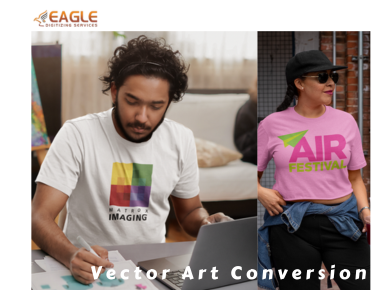The Magic of Silkscreen Printing: A Guide to the Process
Discovering the Art of Silkscreen Printing
Silkscreen printing, often referred to as screen printing, is an art
form that has captured the imagination of creators and artisans for centuries.
It combines craftsmanship with creativity, enabling artists to produce vibrant
designs full of life. From custom t-shirts to intricate art prints, silkscreen
offers a unique method for transferring bold patterns and striking colors onto
various materials. Despite the rise of new technologies, this age-old technique
continues to stand out, retaining its place in both commercial and artistic
fields. In this guide, we will uncover the magic behind this process, explore
its rich history, and delve into how it has evolved into the iconic technique
we know today.
What
is Silkscreen Printing?
At
its core, silkscreen printing is a method of transferring ink onto a surface
using a stencil, screen, and mesh material. This process allows ink to flow
through only certain areas of the screen, creating a precise design. The
versatility of silkscreen printing means it can be used on various materials,
including fabric, paper, and even wood, making it a popular choice for
designers looking to create vibrant, long-lasting prints. Whether you’re
printing bold logos, intricate designs, or unique artwork, this technique
enables a level of detail and vibrancy that is difficult to match.
Why
Silkscreen Printing is Still Relevant Today
In
the digital age, silkscreen printing continues to hold a special place due to
its unparalleled vibrancy, durability, and versatility. Unlike digital prints,
which can sometimes feel flat or lack depth, silkscreen prints are known for
their rich, bold colors that stand the test of time. Whether used on t-shirts,
posters, or fine art, the process allows for lasting impressions that retain
their brilliance. Additionally, there’s something inherently satisfying about
the hands-on nature of the process. The tactile engagement with each print, the
pushing of ink through the screen, and the meticulous care required all
contribute to an experience that digital printing simply
can’t replicate.
A Brief History of Silkscreen Printing
From Ancient Techniques to
Modern Masterpieces
The
origins of silkscreen printing date back to ancient civilizations, where early
forms of stenciling were used to decorate textiles, pottery, and even walls.
The method spread across the world, evolving with each culture’s unique
techniques and artistic needs. In China, for example, stenciling was used to
create elaborate fabric designs. It wasn’t until the early 20th century,
however, that silkscreen printing began to take on its modern form, thanks to
advancements in materials and technology. The process became increasingly
popular in industrial applications, providing a reliable way to produce
repeatable designs at scale.
How Silkscreen Printing Evolved
Over the Years
By
the 1900s, silkscreen printing began to be recognized not just as a commercial
technique but also as a powerful tool for artists. In the 1960s, the technique
reached new creative heights when artists like Andy Warhol embraced silkscreen
as a medium for mass-producing art. Warhol’s iconic Campbell's Soup Can prints
and the Marilyn Monroe series are prime examples of how silkscreen became an
artistic tool for commentary on consumer culture. Today, with the introduction
of modern technology, silkscreen printing is more precise than ever, giving
artists and designers a platform to experiment with new techniques and explore
boundless creative possibilities.
The Basics of Silkscreen Printing
The Core Concept: A
Stencil-Based Printing Method
Silkscreen
printing operates on a simple, yet effective, principle: using a mesh screen as
a stencil to transfer ink onto a surface. The mesh holds a stencil design,
which acts as a barrier, preventing ink from passing through the blocked areas
while allowing it to flow through the open sections. Whether the design is a
simple logo or a complex image, the result is a crisp, clean print. This stencil-based
method offers excellent precision and detail, which is one reason why it
remains so popular among both commercial printers and artists alike.
The Role of Mesh Screens and Ink in the Process
The
mesh used in silkscreen printing serves as the vehicle for ink to move from the
screen to the material being printed. The mesh count—ranging from low to
high—determines how detailed the print can be. A finer mesh is necessary for
intricate designs, while a coarser mesh is suited for bolder, simpler graphics.
The type of ink used also plays a critical role in the quality and finish of
the print. From thick plastisol inks that produce a vibrant, glossy finish to
eco-friendly water-based inks for a softer, matte look, each type of ink
provides a different texture and feel to the final product.
Why Silkscreen? Understanding
the Name
The
term “silkscreen” originates from the early days of the process, when screens
were made of silk fibers. Silk was chosen for its fine weave, allowing ink to
flow through smoothly. However, with the advancement of technology and the need
for mass production, synthetic materials like polyester have largely replaced
silk in modern screens. These synthetic materials are stronger and more
durable, capable of withstanding the wear and tear of large-scale printing runs
without compromising the quality of the prints.
Essential
Materials for Silkscreen Printing
Screens: Choosing the Right Mesh
The
screen is the heart of the silkscreen printing process, and selecting the right
mesh is crucial to achieving the desired result. Mesh count refers to the
number of threads per inch in the screen, and it directly impacts the detail
and smoothness of the print. For detailed, intricate designs, a higher mesh
count is required, while lower mesh counts are ideal for larger, bolder
designs. The material of the screen also matters; polyester screens are the
standard today due to their durability and fine mesh capabilities.
The Magic of Ink: Types and Uses
The
type of ink used in silkscreen printing significantly influences the final
product. Plastisol ink is one of the most popular choices for fabric printing
due to its thickness and durability. Water-based inks, on the other hand, offer
a more eco-friendly option and provide a soft finish on fabrics. Specialty
inks, such as metallic or fluorescent inks, can add a creative flair to prints
by making them shine or glow in the dark. Understanding which ink to use for a
given material or effect is key to creating high-quality prints that stand out.
Emulsion and Exposure: The
Secrets to Clear Prints
An
emulsion is a light-sensitive liquid that is used to coat the mesh of the
screen. This layer of emulsion will harden when exposed to light, forming the
stencil for the design. The process of coating the screen with emulsion and
exposing it to light is what allows silkscreen printing to transfer intricate
designs with precision. The unexposed areas of emulsion are washed away,
leaving behind a perfectly formed stencil that can then be used for printing.
This process is essential for creating clean, sharp lines and high-quality
prints.
Tools of the Trade: Squeegees,
Frames, and More
Beyond
the screen and ink, a variety of tools are needed for successful silkscreen
printing. A squeegee is used to push the ink through the mesh, ensuring it
flows evenly and smoothly. The frame, which holds the screen taut during
printing, ensures the stencil remains in place for precise printing. Additional
tools, such as scoop coaters, are used to evenly apply the emulsion, ensuring
the coating is smooth and consistent. All of these tools, when used properly,
ensure a clean and efficient printing process.
How
Does Silkscreen Printing Work?
The Step-by-Step Process: From
Start to Finish
The
process of silkscreen printing begins with
creating a stencil. The design is transferred onto the screen using emulsion
and exposure to light, which hardens the emulsion where the design will appear.
Once the screen is ready, it is placed on the material to be printed, and ink
is applied. The squeegee is used to push the ink through the mesh, creating the
print on the surface below. The process is repeated for each color in
multi-color designs, with each layer requiring precise alignment.
Preparing Your Design: Creating
the Stencil
A
well-prepared design is crucial for successful silkscreen printing. Designs can
be created digitally or by hand, but they must be transferred onto the screen
using the exposure method. The emulsion is coated onto the screen, and the
design is placed over it. After that, the screen is subjected to light, which
solidifies the emulsion in the design-containing regions. The unexposed areas are washed away, leaving
behind a stencil for printing. This process allows for intricate and detailed
designs that are faithfully reproduced.
The Role of the Screen in Transferring Ink
The screen itself is essential in transferring the ink to the surface
being printed. The mesh allows ink to pass through only the areas where the
stencil is open. By blocking the ink in other areas, the screen ensures that
the design is reproduced with precision. This is what makes silkscreen printing
so effective for creating sharp, clean prints, whether for simple logos or
complex, multi-layered designs. The role of the screen as a barrier and filter
is integral to the entire process.
Printing Your Design: The Art of
the Squeegee
The
squeegee is the tool that presses ink through the mesh and onto the material
being printed. Its role is critical in ensuring an even distribution of ink.
The process of pulling the squeegee across the screen requires the right amount
of pressure—too little, and the ink won’t pass through the mesh; too much, and
the ink may bleed or create a messy print. The technique and precision with
which the squeegee is handled is what allows for consistent and
professional-quality prints.
Setting
Up for Success: Getting Ready to Print
Choosing the Right Surface for
Printing
One
of the defining features of silk screen printing is its versatility in printing
on various materials. While it’s most commonly associated with fabrics like
t-shirts, silkscreen can be used on paper, plastic, metal, and even wood. When
setting up for a print run, it’s important to choose the appropriate material
for the desired result. The texture, absorbency, and type of ink used will all
affect the outcome, so ensuring compatibility between the ink, screen, and
surface is essential for a successful print.
Aligning the Screen for Accuracy
For
multi-color prints, accurate alignment of the screen is crucial to ensure the
different colors register properly on the surface. Registration marks are often
used to help line up the screen with precision, allowing the artist or printer
to layer each color without shifting or smudging. Proper registration ensures
that each layer of ink is applied in the right place, creating a flawless
design.



